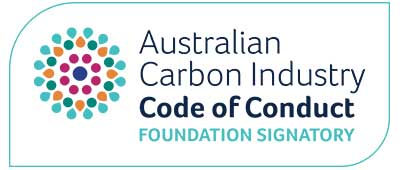New savanna frontier opens up
The new version of the savanna burning methodology was newly minted on 25 March 2015 and opens up a new frontier of potential savanna projects in areas which receive over 600mm of rainfall each year. Are there changes to the existing approach?
You bet there are!
First up it is worth recording the enormous effort and investment of the Department of the Environment over past years to develop savanna burning into a workable methodology. The advent of SavBAT2 (the savanna burning abatement tool) has streamlined a lot of the complexity in the backend and made use of the methodology much easier. This does not mean that everything in the new effort is positive!
If you look at this comparison of the old methodology with the new, you will see that the methodology has been completely rewritten. However, the changes are not as dramatic as that – the methodology maintains the same approach of assigning burning efficiency values to vegetation types but there are a number of tweaks, some of which are significant. For more information on savanna burning, see our dedicated page.
The vegetation classes have been tweaked for over 1000mm and defined for 600-1000mm. In the 600-1000mm the classes include woodland, open woodland and shrubland with combinations of tussock and hummock grasses. Importantly, it seems clear this lower rainfall zone contains many ineligible vegetation types such as grasslands and pindan so fire management efforts in this zone will not be as well rewarded.

Significantly, the methodology applies the ‘newness’ additionality test to ensure the baseline period, or reference period, for emissions levels must start in the year before the project. Previously, there was scope for projects to take account of ‘transition years’ while the project was building up and adopt a baseline period before that period. Fire management is no small undertaking and this will encourage prospective projects to go full bottle from the word go – this may increase safety risks before people build up the skills required.
The methodology introduces the concept of an “uncertainty buffer” to avoid over crediting projects in poor years. There’s a complicated formula but the bottom line is that in a normal year 10% of the credits will by siphoned off to the buffer account. That’s a reduction worth taking into account.
Perhaps, most significantly, the methodology fixes the start of the late dry season start date at 1 August, with no flexibility for adjustment as before. This means that when there is a late wet, such as last year in Cape York, it will be difficult to burn country that is still wet prior to the 1 August cutoff. Unless this is changed, this hard cutoff is likely to cause problems with the variable wets we are now experiencing.
Collectively, these significant changes bring extra risks to savanna projects. What is disappointing, from a policy point of view, is the limited or lack of explanation for these changes which clearly add risk to savanna projects.
There are also some bright spots.
Onerous proposals in the draft to count cattle and record unplanned fires appear to have been dropped.
Additionality requirements have been adjusted by the inclusion of an overriding requirement that a project must not include land where fire management for the primary purpose of reducing emissions is carried out under a law. This means that where fire management is required, say in a national park, projects are still possible as long as the current management is for other purposes rather than reducing emissions. Many parks currently conduct fire management, for biodiversity management and other reasons, but there is certainly scope to lift performance to the level required under the savanna methodology.
There is also some useful stuff on splitting project areas to create flexibility about how projects are run. For example, a project may wish to pool a lot of separate areas into one large project and report on the different areas separately.
An interesting aside for emissions tech-heads is that termites remain a sleeper. Termites might be a higher factor in the lower rainfall zone because they are more prevalent. However, studies are still limited so their methane emissions remain unknown and are excluded for now.
Clearly, savanna burning will not be as lucrative in the new areas down to 600mm because of the lower fire intensity and vegetation restrictions. But it will be interesting to see how projects develop on this new frontier which can deliver benefits far beyond the carbon credits they generate.
Two submissions on the draft were kept secret and not published. I wonder what they said?























